The Bagpipe Society
Mysterious Symbolism of Askos
Part 1: Ruminating Mythology
“Myths speak of human destiny in its essential prism”1
This study focuses on the transcendental symbolism of the Askos (From ancient Greek ἀσκός bag, wineskin), as it was understood and constructed through the process of “symbolism” in the meditation of the ancient religious person in Greece from the Bronze Age to the present day. This presentation is a summary of the data drawn both from distinguished scholars of the ancient world and its mythology, as well as through the texts of the Greek literature through, in an attempt to illustrate to a certain extent, unknown aspects of its character and the Dionysian religion with which it is intertwined, because the “monstrous and unnatural character of the myths motivates the listeners in the search for the truth, the apparent teratology becomes the beginning in the search for the research” (Proklus)
Picture 1 - Kylix, Baltimore, J. Hopkins University B6 / Baltimore, Walters Art Gallery
The study of the symbolism of the leather bag, known as “Askos‘ in Greece, poses to the researcher the challenge of immersion in a historical field of exceptional and timeless importance, focusing on the investigation of the multifaceted character of this leather utensil. As the multidimensional study of the bag can cause confusion, but also disorient the researcher, the primary concern was to investigate the nature of the bag in Greece in ancient times, based on prevailing social, political and economic conditions which would allow, on the one hand, to highlight and exploit specific aspects of the leather bag and, on the other hand, to elevate it to a religious and sacramental symbol.
Findings of the study of archaic remains, written sources, iconography and ethnographic research had to be synthesized, with ancient Greece as the focus and centre of interest, even if it seems that the issue extends too far in space and time.
The study of written sources focused on those from Greek antiquity, with the parallel consideration of some later, mainly Roman, testimonies, which are either newer commentaries on older texts; together with an amalgam of data from different cultural phases. The importance of the research is valuable for the analysis of the ancient Greek past, looking at original texts, the traditions and testimonies of the recent past as well filling in any gaps in the interpretation of ancient Greek texts. There are also newer sources, eg Byzantine, which shed light, by analogy, on some potential aspects of the value of the bag in the distant past.
Also, the study of the iconography for the depiction of the bag is the first basis for evaluation and confirmation of the written sources, while the interdisciplinary study leads to relatively safe assessments of the importance and character of the bag, as in the decoration of ancient vessels - a mythology in images that have their own language.2
Picture 2 - Crater in Ferrara, Ferrara, National Museum of Spina T1036B VP
We must balance the logical and the imaginary and it is important to understand to some extent the mythical thinking, how it transforms the object into a symbol and how it goes from the symbol to the archetype. If we want to identify the object (Askos- bag) that is an “image” and make it a “symbol” and from a symbol to pass it to the “archetype” we must find a logical sequence that will continue in our thinking and which will raise it constantly in levels.
Mythology is an artfully codified history of the cosmogenesis of the universe and at the same time a description of the functions of the human soul. Symbols are idols, they are images that move the world.
What is hidden behind the name “Dionysus”? What is the relation of Dionysus with the goats, the bags made of their skin, the cane and the horn, materials which also form the tsambouna? What is hidden behind the symbol of the bag when it was part a true, historical religion?
“The body of human souls, the primordial image of incorruptible Life”
Picture 3: Kylix Heidelberg, Ruprecht-Karls Universität, young crowned with Askos
In the beginning, it is the Myth
By exploring the multifaceted term “myth” and staying true to the Greek tradition, we call “myth” any story that attempts to answer questions such as: how the world was born, what higher powers rule it, how man and the various animals were created, and other questions that concern man at a time when his thought has not reached the point of consciously serving objective truth.
Picture 4: Peliki, St. Petersburg, State Hermitage Museum B1621 Askos fight Painter of the Lutro, 450-400 BC.
The basic principle for approaching myths is that: Myths speak of things that are eternal and that are primarily cosmogenic and psychic. They have nothing to do with real events in our world. In a sense, a historical event can be used as a basis but the whole plot in the context of a myth is purely to capture some eternal truths, whether cosmogenic, physical or mental.
Myth, according to the anthropological interpretation of the term, is a sacred or religious narrative whose content is related to the origin or creation of natural, supernatural or cultural phenomena. The anthropological concept of myth differs from that which implies a lie in the content of the myth. Myths are also explored as fragmentary sources of oral historical narrative as indications of social values that shape the social map of a group of people and their universal structures. The ancient Greek myths, therefore, describe ontological events (the meaning of existence) with cosmic dimensions and how they can be explained on a human level.3
The Myth of the Askos:
The etymology of the word Askos is revealing as, according to ancient sources, askos is the one that is not torn, durable or harmless. The word also refers to “exercise” (askeses). This more modern meaning of the word is also etymologically connected with the bag: the process of physical effort (asceticism), through which one becomes harmless, that is, “askos”. It also means to heal, to take care of, to exercise, to become a poet, to be created.4
One of the demands of the present research and, in fact, a basic condition for the study of the importance of the leather bag, is to make clear exactly what the bag is. This question is crucial as we do not have enough surviving bags from antiquity, to give it a tangible definition but also because the science of archaeology, using reasonably specialized terminology, has defined a “bag” a specific type of clay vessel. This vessel is considered to have as a model the corresponding leather utensil.5
From the written sources, we find that the basic element of the leather vessels called Askoi are the four feet (podeones) and the neck, which correspond to the legs and the neck of the animal. Besides, the fact that Askos in the ancient literature was one of the Giants who opposed Dionysus, and as punishment the gods flayed him and made his skin the leather container of the same name, indicates that the bag refers to the whole the body of the animal, with all its members, and reminds it directly, so that the above causal myth for its name is connected with an anthropomorphic existence.6
“Bag of Aeolus, that the human body is allegorized”7
Man, always good at being a wineskin, and at times a winesack (ἀεί ποτ ‘εὖ μὲν ἀσκός εὖ δὲ θύλακος ἅνθρωπός ἐστι)
“nature of humans: puffed-up wineskins” (αὕτα φύσις ἀνθρώπων, ἀσκοὶ πεφυσαμένοι)8
“All the bags to be filled with wine (allegorically the Word of the Lord) , they are empty and only have the shape of people”9
In folklore: inflated sack: arrogant but empty man
It is very common to compare the bag with a human, obviously due to the shape of the parts of the bag. The bag, as a clay or leather utensil, reveals the fragility of human nature. Leather and clay are an organic material and therefore perishable.
Picture 5: Red-shaped Askos -Apoulia Italy with Dionysus
In his Self-Critique, 1872, which he titled the “birth of tragedy“, Nietzsche was of the opinion:
“Because in this field philologists still have before them almost everything to discover and dig up! And first of all the problem here, that there is a problem here - and that we have not answered the question: what is the “Dionysian spirit”? the Greeks remain unknown and incomprehensible to us as always.10 On this proposition of Nietzsche, Carl Kerenyi states: “This proposition just remains valid to this day, although scientists will have to reverse it at the same time: the Greeks and its forerunners in Crete must help us to understand that element of their culture which, if understood, will make them understand themselves, that is, the culture of the Greeks and their Cretan forerunners” 11
And from there our search will begin, from the Bronze Age, from Minoan Crete, we will meet the Askos before the discovery of Wine… From the moment Zeus was born, A bee and a goat will lead us….
The Genesis of Transcendence
Picture 6 – Silver drachma of Yrtakinion 3rd century BC
When consciousness mythologizes, either by composing the myth or by meaning the synthesized myth, it does not follow the methods that characterize scientific knowledge, those that govern scientific truth and thus synthesize nature into a system of laws; nor does it follow the methods by which it is diagnosed the historical become, in search of the truth, which is found only with the categories of the intellect.12
With this assumption, we go back to the prehistoric, to the pre-logical centuries. “In the beginning was the Myth” With myth the consciousness rises, taking the first step beyond the animal kingdom. We will take a trip to the first civilization in Europe, the Minoan where the mythology of the bag unfolded.
In Minoan Crete the secret life of nature spreads to human creation and is imbued with special charm and special grace. An anthem to the goddess of nature resounds everywhere, an anthem to joy and life
Picture 7 The Late Minoan sarcophagus of the Holy Trinity of Heraklion,There is a double flute with a horn on the left as we see at the end of the tsambouna
The world to which the Minoan artists take us is a world of plants and animals, of divine epiphanies (Epiphany = the revelation of divinity to the faithful). For a Minoan artist, the world was presented above all in its plant and animal versions. The Minoan pose presupposes the possibility of divine manifestations, that is, “products of the ability you envision that could be considered true‘‘. Thus, the concept of transcendence in the natural world was born 13
At the Birth of Zeus, Rhea his mother deposited him in a Cave (the caves symbolize the birth14)
The bees deposited honey on his lips and the goats milk15
Before people started raising bees, they usually found them in caves. Their sweet food it was the most natural food for the baby who was born in a cave. The milk in the mysterious symbolism, symbolizes the fall in the material world (and immortality) while the wine its elevation16,17. So Homer (Iliad B 157) and Diodorus (5, 70) report that Zeus took the name “aegiochos” because he was raised by the goat (aiga) Amalthea: As for the goat that raised him, Zeus he awarded other honors, but he took from this name Aegiochos (Diodorus, book 5, 70). Which Zeus fled and made her a constellation.
Picture 8 Zeus placed Amalthea in the sky, known as Aiga (Capella)
Hephaestus made the shield of Zeus from the skin of Amalthea, which was impenetrable by arrows and which was the most important weapon of Zeus in the Battle of Titans. Zeus then gave the auspices to Athena. From this fact came the word goat > aegis = the cover, the protection, etc. The shield has the meaning of the sack-body. The sack as a word comes from an anagram of the word askos (sákkos, “sack, bag; sackcloth”)
The goat/aiga (protection - cover) refers to the celestial body primarily and to lower levels of any material animate body. The word AIGA in anagramming gives us the name GAIA which symbolizes the material, geodetic existence of the universe.
Picture 9 - a mosaic with Gaia holding the Horn of Cornucopia or Amalthea
The Kourites were the ones who protected Zeus through dance18 The importance of dance in Greek thought unites gods and people on the same level of existence19, something that will be adopted in the religion of Dionysus20.
Picture 10 Kourites protect the body of Zeus with the “shields”
The Kourites were also called Kouroi/Kouros. Kouros or koros means in a sense the “saturation” the filling of the bodies but it also means the herd, the animals that are sheared or taken care of by the shepherds, In Latin: couro, ae = Greek (επι) -κουρώ = I take care of, take care of, couro , onis = o κύρης, ceres, eris = I feed, I am satisfied, I am full, in English : cure, care .
The Ascension of the Askos: The sacred swaddling clothes and the constellation of Sirius/ From Minoan Crete to the Christian Tradition
The “swelling” of the Nile in ancient Egypt coincided with the sunrise of Sirius at dawn in the month of July 19 at dawn.
Hegemonic places of Greece, such as Olympia, Delphi, Athens and Epidaurus had chosen the month of the rising of Sirius at dawn as the first month of the year. This would be the greatest paradox if the Greeks had not inherited it from an ancient civilization, a culture that in historical times would have had closer relations with Egypt than Greece. The mediating culture in this case cannot be other than the Minoan. The orientation of the palace of architecture in Crete, as it was accurately calculated, had as its point of reference: Sirius.21 Information about an event where its recording dates back to the time of the Roman Empire is also based on Sirius. It is found in a collection of paradoxical stories. It is entitled “Thieves”.22
“In Crete, they say there is a cave with bees where according to the legend Rhea gave birth to Zeus where there is an order regarding the proper religious behavior that no one should enter, neither god nor man. At some point each year it seems to project a glow of a large fire through the cave (the rise of Sirius). This happens, according to legend, when blood overflows from the birth of Zeus. It is then reported that four thieves wanted to take the bees’ honey. Indeed, they took the honey and saw the swaddling clothes of Zeus. Their armour shattered and fell from their bodies. Zeus thundered and, ready to strike them, raised the thunderbolt. But the Squadrons and Themis, the goddess of the natural law, prevented him, because he would be against holiness if someone died in that cave. The four honey thieves transformed into birds "
Before people started raising bees, they usually found her in caves. With their sweet food it was the most natural food for the divine baby who was born in a cave. This archetypal situation, as offered by nature, in the context of Greek myth, likened to Zeus. Bees endow humans with the basics of pure existence - the existence of children in the mother body - with their honey23
Picture 11 Rhea delivers to Saturn to swallow the swaddling stone instead of the newborn Zeus
The swaddling clothes in the Greek language are called fascia: From φασκιώνω (faskióno, “to swaddle”), from Koine Greek φασκιῶ (phaskiô), from Koine Greek φασκία (phaskía), from Latin fascia (“strip, ribbon”)
Noun φάσκιωμα • (fáskioma) n (plural φασκιώματα)
swaddling
(swaddling clothes): σπάργανα n pl (spárgana)
We notice that the word Askos is inherent in this sense as well. It symbolizes the realization of the soul in the world of matter.24 The archetypal genesis of the divine infant in a cave in its infancy with the appearance of the sacred star is also found in Christian teaching.
Picture 12 – Nativity Scene
Even today in Italy the Zampogiari play the bagpipe (askavlos) in the swaddled Christ. It may be a reminder of these old beliefs.25
Picture 13 – Zampognari
To summarise, we saw that the concept of the Askos speaks of the embodiment of souls. In the continuation of the article we will see how the bees discovered the Askos, how this was adopted by the religion of Dionysus and transformed through the birth of Wine. How the symbols of Dionysus (goat bag, cow horn, reeds) were united with the help of Hermes and Athena and elevated to the ritual musical instrument we know today as “tsambouna“.
Picture 14 Skyphos in Basel, Basel Market (M.M.) satyr with askos, Hermes playing double flute, goat Painter of Theseus, 525-475 BC Para 257
- Paul Diel: Symbolism in Greek Mythology
- See “The bag in ancient Greece: remains, testimonies, iconography, modern tradition“ - Terzis Georgios
- https://hellenictheologyandplatonicphilosophy.wordpress.com/
- Etymologicum magnum; Sylburg, Friedrich, 1536-1596
- Noun Archeology • A squat jar for wine or oil, resembling a wineskin in shape, with a wide spout for pouring and a curved handle which extends across the top of the jar, and attaches at the spout.
- Ascus (Askos), a giant, who in conjunction with Lycurgus chained Dionysus and threw him into a river. Hermes, or, according to others, Zeus, rescued Dionysus, conquered (edamasen) the giant, flayed him, and made a bag (askos) of his skin. From this event the town of Damascus in Syria was believed to have derived its name. (Etym. M. and Steph. Byz. s. v. Damaskos.)
- Index in Eustathii commentarios in Homeri “Iliadem” et “Odysseam”: ad fidem
- (Clem. Strom.4.5.45, Plato and Pythagoreanism By Phillip Sidney Horky)
- OLYMPIODORUS Diaconus Scr. Eccl. Commentarii in Jeremiam (in catenis) {2865.003}
- Nietzsche’s Attempt at a Self-Criticism: Art and Morality in The Birth of Tragedy - Daniel Came
- Dionysos: Archetypal Image of Indestructible Life
- Greek Mythology, Introduction analysis and interpretation of Greek Myth volume A / Introduction to Mythical Thought - .- Kakridis
- Kerenyi, Dionysus / The spirit of Minoan art
- See Porphyry, On the Cave of the Nymphs
- (Apollodorus A, 1, 6 -7)
- “You have become (a) god from human: A kid you fell into milk“ see: Milk as a symbol of immortality in the “Orphic” gold tablets - Stian Torjussen
- see Orphic Excerpt No. 18 or I. G. XIV 641, 1)
- Apollodorus A, 1, 6 -7
- Kereny-Dionysus / Minoan visions
- The semantic consistency of the mythologists is also seen in the transformation of the king of Arcadia Chorikos (Χορός-Choros/dance) into a leather bag, which was therefore named Korykos. The surname Korykos will be found below and this will also be related to the birth
- EVIDENCE OF MINOAN ASTRONOMY AND CALENDRICAL PRACTICE by Marianna Ridderstad/ Helsinki University Observatory
- Antoninos Levaralis: Metamorphosis synagogue 19 (Mythographi Graeci II 1, Leipzig 1896)
- Kerenyi-Dionysos / Light and honey
- Dodds (n. 6), 307. The Platonic inspiration for the idea that the soul entering generation should accumulate a series of elemental ‘tunics’, as Proclus calls them (ET 209), is found at Pl. Ti. 42c–d.
- https://www.romadailynews.it/altre-notizie/gli-zampognari-0373313/
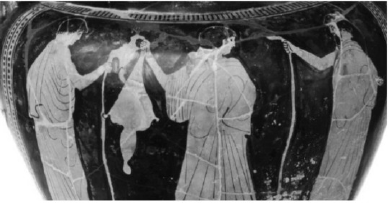
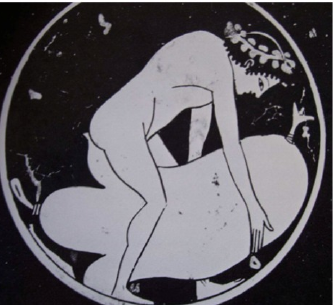
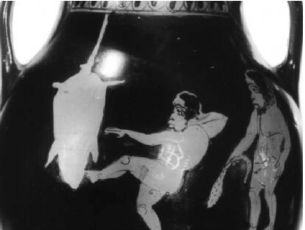
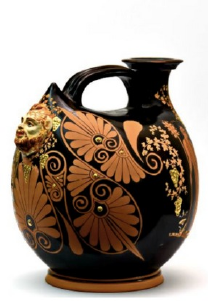
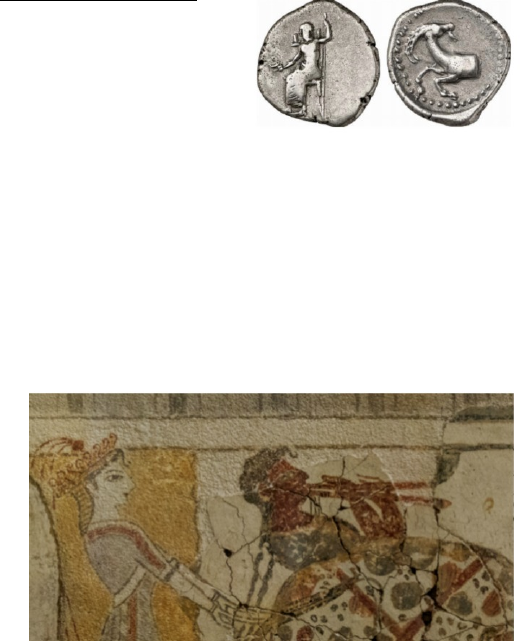
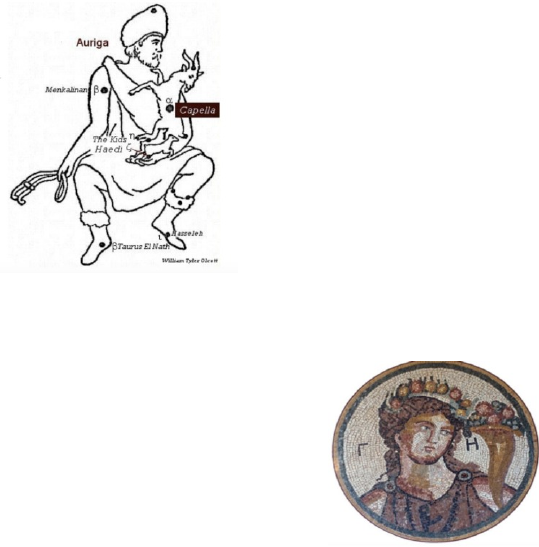

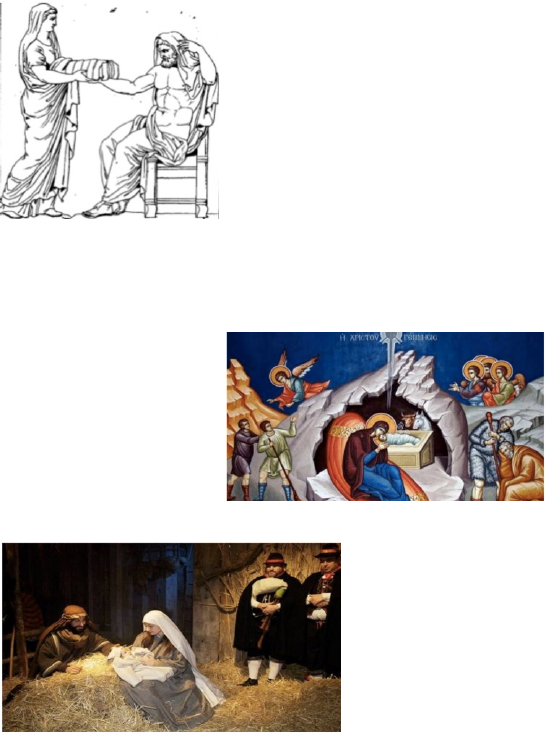
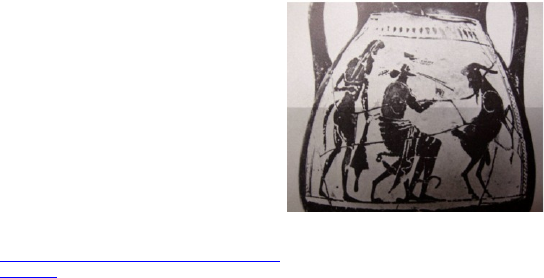
- Data Processing Notice (GDPR)
-
@BagpipeSociety on X (formally known as Twitter)
-
TheBagpipeSociety on Instagram
-
 BagpipeSociety on Facebook
BagpipeSociety on Facebook
Something wrong or missing from this page? Let us know!
